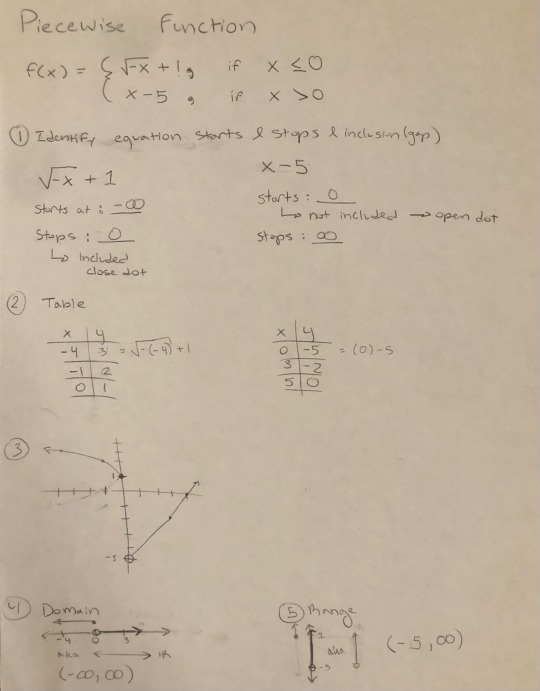#piecewise function
Explore tagged Tumblr posts
Text
<— Unit 13: Part 3—>
Piecewise Functions
#1

#2

#3

Page 40
2 notes
·
View notes
Text

yeah
#i'm at x = 6 y = 6 🫡#truthfully it should be a piecewise function where fics written starts at 3 and flattens before shooting up XD bc i am always writing fics#torturing the character#help
21 notes
·
View notes
Text

FINALLY this beast is done
#THANK U JELLY FOR INSPIRING ME TO DRAW THIS#fabiart#oc: webcrawler#oc: rite the snivy#oc: owgee#oc: piecewise function#oc: deadmall#posca#gellyroll#my ocs
16 notes
·
View notes
Text
me going into my piecewise functions test knowing that piece is a portion of an object and wise is what my grandmother is *hits a dance*
#math#functions#autism#neurodivergent#executive dysfunction#school#high school#pun#going2die#pda autism#autism spectrum#f(x)#mathematics#piecewise functions#studyblr#maths#mathblr
11 notes
·
View notes
Text
My fragile artistic little brain cannot handle Senior High Gen Math :,D
Wish me luck on my QT exam next week T-T

#senior high school#stem#fuck my life why did I even chose STEM#fyp#still will probably be worthit once I graduate though#this is just the tip of the iceberg#Our Grn Math professor just told us we were supposed to have 10+ LESSONS IN#THE FIRST QUARTER WHAAT??!#yh we only had 4 lessons on our first quarter thanks GOD#Correction “Grn Math...” =》 “Gen Math...”#Think this one's easy? Just wait until we had to apply Piecewise Function on every types of function.
2 notes
·
View notes
Text
Seasonal Growth Dynamics of Arundo donax L. in the U.S

Abstract
Giant reed (Arundo donax L.) has been extensively evaluated as a dedicated energy crop for biomass and biofuel production in southern Europe and the United States, with very favorable results. Current agronomic and biologic research on giant reed focuses on management practices, development of new cultivars, and determining differences among existing cultivars. Even though detailed information on the growth patterns of giant reed would assist in development of improved management practices, this information is not available in the United States. Therefore, the objective of this 2-year field study was to describe the seasonal growth patterns of giant reed in Alabama, United States. Changes in both plant height and biomass yield of giant reed with time were well described by a Gompertz function. The fastest growing period occurred at approximately 66 d after initiation of regrowth (mid-May), when the absolute maximum growth rate was of 0.045 m d-1 and 0.516mg ha-1 d-1. After mid-May, the rate of growth decreased until maturation at approximately 200 d after initiation of regrowth (mid- to late September). The observed maximum average plant height and biomass yield were 5.28 m and 48.56mg ha-1, respectively. Yield decreased following maturation up to 278 d after initiation (early to mid-December) of growth in spring, partly as a result of leaf loss, and was relatively stable thereafter.

Introduction
Giant reed (Arundo donax L.) is a perennial rhizomatous C3 grass native to East Asia which is grown in both grasslands and wetlands, and is especially well adapted to Mediterranean environments (Polunin and Huxley, 1987). Since giant reed is sterile, it is propagated vegetatively, either from stem cuttings or rhizome pieces, or by means of micro-propagation. Due to its easy adaptability to different environment conditions and rapid growth with little or no fertilizer and pesticide inputs, giant reed has been extensively evaluated as a dedicated cellulosic energy crop for biomass and biofuel production in southern Europe and the United States, with very favorable results (Vecchiet et al., 1996; Merlo et al., 1998; Hidalgo and Fernandez, 2000; Lewandowski et al., 2003; Odero et al., 2011; Huang et al., 2014; Nocentini et al., 2018; Monti et al., 2019). Most perennial grasses have poor yields during the year of establishment, but giant reed is an exception: a first-year yield of over 16mg ha-1 was reported by Angelini et al. (2005) at a planting density of 20,000 plants ha-1 . Biomass yields are typically 20-40mg ha-1 year-1 without any fertilization after establishment (Angelini et al., 2005; Cosentino et al., 2005; Angelini et al., 2009). Calorific value of mature giant reed biomass is about 17 MJkg-1 (Angelini et al., 2005). The average energy input is approximately 2% of the average energy output over a 12-year period (Angelini et al., 2009). Unlike most other grasses, giant reed possesses a lignin content of 25%, which is similar to that of wood, and a cellulose content of 42% and a hemicellulose content of 19%, making it a desirable cellulosic energy crop for both solid and liquid biofuels production (Faix et al., 1989; Scordia et al., 2012; Lemons et al., 2015). Giant reed can also help mitigate carbon dioxide (CO2) emissions from fossil fuels because rhizomes sequester carbon into the soil. The reported carbon (C) sequestration by giant reed rhizomes was 40-50mg C ha-1 over an 11-year period (Huang, 2012), which is 6-8 times higher than that by the roots of switchgrass (Panicum virgatum L.) (Ma, 1999), a model cellulosic energy crop selected by the United States Department of Energy (Wright, 2007). Current agronomic and biologic research on giant reed focuses on management practices, development of new cultivars, and determining differences among existing cultivars (Nassi o Di Nasso et al., 2010; Nassi o Di Nasso et al., 2011; Nassi Nassi o Di Nasso et al., 2013; Dragoni et al., 2016). Even though detailed information on the growth patterns of giant reed would assist in development of improved management practices, this information is not available in the United States. Therefore, the objective of this study was to describe the seasonal growth patterns of giant reed in Alabama, United States.
Source : Seasonal Growth Dynamics of Arundo donax L. in the U.S | InformativeBD
#Giant reed#Cellulosic energy crop#Plant height and aboveground biomass yield#Growth analysis and Gompertz function#Piecewise regression analysis#SAS PROC NLIN procedure
1 note
·
View note
Text
I was doing some thinking about elf ages prompted by the World of Lewd Elves jumpchain and came up with an equation that works well.
Let x be the chronological age of an elf. Let y be the apparent biological age of an elf in human years.
y = 25x/(x+25)
The nice thing about this function is that it's smooth: there's no annoying points where the rate of growth changes abruptly (in the relevant domain). It also handles really old elves well. It gives finite apparent ages even as chronological age approaches infinity.
A five year old elf looks like a 4.2 year old human. A 25 year old elf looks 12 and a half. A hundred year old elf looks 20. A six hundred year old elf looks 24. A ten thousand year old elf looks 25, as does a billion year old elf, within the margin of error of age guessing. It would be very hard to tell a six hundred year old from a billion year old by sight.
Derivation:
I decided that my elves would start out growing at human rates at birth and slow down from there. This gave me boundary condition 1: dy/dx(0) = 1. I also wanted them to never die of old age.
At this point I didn't know what form I wanted the function to take. I knew I wanted the start to be linear and the end to be horizontal, but not what that would look like. I did recall a function with those characteristics from my molecular biology class: the Michaelis Menten Equation. I fiddled around with something of the form y = ax/(x+b) and its derivative dy/dx = a/(x+b) - ax/(x+b)^2 before realizing that (because of BC1) at x= 0, dy/dx = a/b = 1. This gave me one constant, k.
I arbitrarily decided that an old elf would look like a 25 year old human (partially because math with 5^2 is easier to do in my head). This gave me boundary condition 2: the limit of y as x approaches infinity is 25. Because the limit of kx/(x+k) turns into k/1 by L'Hôpital's rule, k = 25. You can fiddle with this number if you want your elves to grow up faster (higher final age) or slower (lower final age).
As a side note, I did the majority of this in my head while in bed. I did have to look up the Michaelis Menten equation on my phone, and also used it to calculate how old a 5 year old elf would look. The rest was doable in my head, including the derivative and the 25 and 100 year old elves. This might have something to do with me completely forgetting that WoLE elves only live hundreds of years.
#math#yeah i did this entirely so I could track how old loli elves would be at different appearances#i mean also because piecewise functions are ugly and the function describing beautiful elves should be beautiful too
0 notes
Text
im so smart i finished this math before the rest of our table
1 note
·
View note
Text
Finite and Infinite Sets
Recently, in my Discrete Mathematics course, we have been discussing the title of this blog post. It took me some time to understand these concepts, but it is finally clicking in my mind and it’s all I can think about at the moment.
First, I’d like to discuss some definitions.
When I mention the notion of a set, this refers to a collection of objects/numbers (we call each number in a set an “element”) in which the order doesn’t matter (unlike with sequences). An example of a set is ℝ, the set of all real numbers. Another example that will become important later is ℕ, the set of natural numbers (positive integers starting at 1).
A bijection refers to when every element in one set maps onto a unique element in the other set. When we map a set onto another, we write X → Y. This is shown in the image below, because it helps to see this visually.

When two sets are equinumerous (written X ≈ Y for two sets X and Y), this simply means there is a bijection between these sets.
By definition, in order for a bijection to be possible, the two sets have to contain the same amount of elements, or have the same cardinality (written |X| = |Y|, which in English means “the cardinality of X equals the cardinality of Y”). This means the two sets have the same size.
Now, we can talk about finite and infinite sets. The notion of a finite set is rather intuitive: there are n elements in a set X where |X| = n. An infinite set also makes sense conceptually, where the elements never reach a boundary. However, there are different kinds of finite and infinite sets that makes things interesting.
We can say a set is denumerable, which means we get a bijection when mapping ℕ to said set. An example of this is the set of integers, ℤ. When we have ℕ → ℤ. We can show this by representing this as a piecewise function and separating the integers into even and odd, and we find that there is a one-to-one, unique correspondence between the two sets (perhaps I will go through this proof in another post but there are examples online).
A denumerable set can be infinite or finite. In the example above, ℤ is infinite and denumerable. When a set is countable, that means a set is either finite or denumerable.
What is interesting is when we have an infinite and uncountable set, such as ℝ. In this case, there is a beautiful way to prove such a thing using Cantor’s Diagonal Argument. I won’t discuss this in full here, but here is the link to the Wikipedia article: https://en.wikipedia.org/wiki/Cantor's_diagonal_argument?wprov=sfti1
Thanks to anyone who has read my post. My name is Cameron and I’m a math major that loves to discuss what I’m learning in my classes. Keep in mind that I am not an expert, so I am open to anyone scrutinizing my explanations if you believe something is represented wrongly.
This is the song I’m currently listening to on repeat:
#math#math class#math posting#mathcore#mathblr#mathematics#i love maths#set theory#infinite sets#finite sets#fugazi#Spotify
30 notes
·
View notes
Text
Piecewise Absolute Value
*Problem wants you to convert absolute value function into a piecewise

0 notes
Text
Hmm. It seems like pretty often what we want in mathematics are objects that are "nice up to nice unniceness". Like. For instance a function that's continuous except on a set of measure 0. Continuous functions are nice, and sets of measure zero are "small", which makes them nice in a certain sense. So we want a function which nice, up to some set of unnice points, such that the set of unnice points is nice. "Nice up to nice unniceness".
Another example I was thinking about are like, polyhedra. Polyhedra are smooth, except at the "seams", where they aren't differentiable. But those seams themselves are differentiable (think about a cube; the seams are lines). Well, actually the seams themselves are only differentiable if you exclude the seams between seams (on a cube, these are the corners). Etc. Actually in a polyhedron everything is piecewise linear. But you could imagine a more general smooth version of this. A cube is "smooth up to recursive smooth unsmoothness". "Nice up to recursive nice unniceness".
30 notes
·
View notes
Text


doodles at work while trying to escape the 8 month art block i've had
#fabiart#fawfposting#oc: piecewise function#fella on the left is just a random sparkledog lol#listen. theyre all i draw when i'm bored
2 notes
·
View notes
Text


Composition of piecewise functions got me feeling like I’m looking at a mirror through a mirror through a mirror until I can’t tell where the end is. Just call me Alice.
#academia aesthetic#chaotic academia#dark academia#romantic academia#mathblr#mathematics#blog#thoughts#deep thoughts#love and deepspace#science
11 notes
·
View notes
Note
got distracted for like 3 minutes doodling nori on my math notes and now i have no idea how to graph a piecewise defined function
a what wise function?
16 notes
·
View notes
Text
sophmore year week 3 started!!!
currently analyzing tone and diction for Night by Elie Wiesel in english, piecewise functions in math, my art project is coming along nicely, and auditions for alice in wonderland are tomorrow!!
#studyblr#dark academia#light academia#high school#study motivation#romantic academia#school#math#thespian#theatre#english#elie wiesel#night#mathematics
7 notes
·
View notes